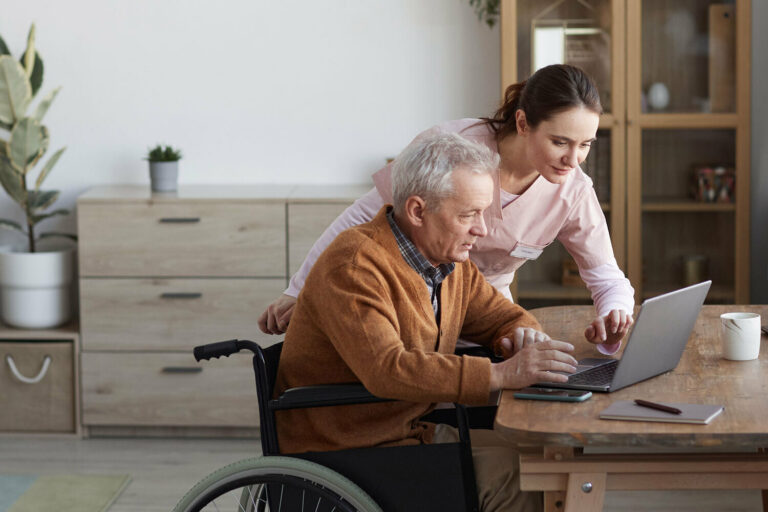As COVID-19 cases climb to more than 2.9M and counting in the US alone, there’s no question that the road to controlling this pandemic is still a long and difficult one.
If there’s one small glimmer of hope, however, it might be this: the rising reliance on telemedicine. The coronavirus pandemic is proving the utility of the telehealth care model that — before now — hadn’t quite gotten the traction it deserved, despite numerous obvious benefits (e.g., reducing costs through early intervention, better access for underserved populations, improved continuity of care).
90 percent of physicians surveyed are using some form of telemedicine — with over 60 percent intending to continue post-pandemic, a 3x increase in the average adoption rate. At both the state and federal levels, programs that support telemedicine — from requiring private payers to cover these services to expanding broadband access to rural areas so services can be used — have been rapidly implemented. States are also enjoying wide latitude to expand Medicaid coverage of various telehealth services.
What’s more: patients are responding positively, with patient satisfaction roughly the same for telemedicine services as it is for in-person visits, according to a recent survey.
So how can we avoid a return to ‘medicine as usual’ and ensure telemedicine is here for the long haul? And how can it evolve to center around our wellness — encouraging it, rewarding it, being compensated for it — versus a current model that keeps us just unwell enough to come back over and over and over?
Encourage stickiness
From my vantage point as a healthcare technology CEO, the concept of “stickiness” is discussed ad nauseum in a product context. How do you make your product or platform sticky enough so customers don’t want to leave? In other words, what makes it compelling enough to stick around? Healthcare professionals, leaders, entrepreneurs, and technologists must seize this moment in time to innovate and “solve for sticky,” if you will.
At a very basic level, that means solving fundamental technology challenges. Do your patients have what they need to stay in touch with you? And does it work consistently? Maybe it’s as simple as providing an inexpensive phone to patients who need one – or augmenting a physician’s ability to track and treat by equipping people with devices like home blood pressure monitors as some insurers are doing.
Move faster toward highly personalized telemedicine.
When COVID-19 erupted, services like Push Health and Teladoc had hundreds of patients eager to connect with doctors. These were people anxiously seeking answers about symptoms, treatment and testing. They weren’t looking for a specific doctor to create an ongoing relationship, they were simply looking for information. That was, of course, fine. But it’s just one use case, and it’s certainly not where telemedicine is ultimately headed.
If the first version of telemedicine was “get my question answered,” the next wave is “be truly seen and cared for.” For that to happen, telemedicine must connect patients with caregivers in a team approach where the patient really is the center of all the activity. Imagine, for example, you’re a diabetic with high blood pressure and cholesterol. You don’t need just one doctor — you’ll likely have an entire team that includes a primary care physician, a nutritionist, a nurse or PA, a specialist (e.g., an endocrinologist or cardiologist), a pharmacist, device support…the list goes on
Telemedicine should make it possible for all these professionals to pick up where the other has left off and check in with you regularly so you stay well. Maybe that means a video chat with your nurse to make sure you understand discharge instructions, a text reminder from your nutritionist with a link to a healthy grocery list, a real-time messaging session with your pharmacist to ensure you know when and how to take a new medicine.
That multiple touchpoint scenario is the linchpin to kicking the next generation of telemedicine in gear — and it’s not a pipe dream. Look at examples like Medicare’s Remote Patient Monitoring Program, which helps patients stay on top of their blood pressure, heart rate, O2 saturation, weight, etc, all through Bluetooth-enabled devices.
Take a hard look at accepted dogma.
It will come as a surprise to literally no one that there are a host of entirely unnecessary — yet completely routine! — medical tests. We all have anecdotes around a hospital stay that involved a battery of exams that seemed like overkill, a test our clinician couldn’t quite justify to our satisfaction, a bewildering encounter with a specialist we weren’t convinced was needed.
But some of the core tenets of medical canon — like the annual physical — fall in this category of “nice but not very useful.” A Cochrane meta-review of 14 studies found these yearly exams didn’t decrease mortality or morbidity rates. It begs the question, just why are we doing these at all to healthy people — and is there a better way?
Even essential tests like mammograms, colonoscopies, and pap smears could be discussed beforehand on live video chats, real-time messaging, or even over the phone — and then scheduled without a time-consuming in-person doctor’s visit that’s really just to get the order for the test. If we can show that telemedicine drives the same or better outcomes, with added convenience for patients, we make an even more compelling argument for the benefit of telemedicine.
Eliminate the challenge of the worried well.
There are indisputably times where in-person medicine is critical for patients. Yet a not-insignificant amount of time is spent on the “worried well.” Our chief medical officer describes these folks as the ones with non-life threatening events, who want the reassurance of seeing a physician, even when it won’t make a difference.
Think about coming in with a cold or flu, hoping for antibiotics or a simple confidence boost. That type of visit has plummeted in the age of COVID; people who might have come in for simple issues are correctly calculating that it’s too risky to chance for minor illnesses. This change in behavior underscores two points: first, that the body can typically heal very basic ailments given enough time, obviating the need for an in-person visit, and second, that overdiagnosis and overtreatment from these visits in reality accomplishes very little.
Thus, telemedicine advocates can correctly point out that the worried well can still get what they want — reassurance that their ailment isn’t worse than it really is — from the comfort of their couches. In the process, we’ll cut down on unnecessary visits and prescriptions, improve convenience, and preserve more in-person time for the patients who truly require it.
Clear regulatory hurdles.
Out of desperation, many states have temporarily suspended the medical license issue simply because they need caregivers to come in and treat patients at overrun healthcare systems. Whether these doctors and nurses have licenses in Arkansas or California or Missouri is irrelevant — they are licensed, period, and they’re urgently needed. There have been no reported adverse outcomes from having an out-of-state caregiver on the ground treating patients. What happens, though, when COVID ends?
It seems pretty clear we should not go back. There has literally been only upside to having a mobile, expert healthcare force able to go where the need is. But here’s the rub: the medical licensing practice is an annual money-maker for states. In reality, there should be easy reciprocity granted through the states — or a federal licensing standard should be the norm. That would open the door to ensuring healthcare providers can create sustainable telemedicine practices that aren’t dependent on serving patients in one geographic area.
Telemedicine ultimately moves us exponentially closer to a real patient-centered care delivery model. We can use this time — as technologists, practitioners, consumers and providers — to advocate for some relatively straightforward changes that will drive better coordinated, more convenient, wellness-first care.
What an outcome that would be.
About the Author:
Michelle Pampin is the CEO of Welkin Health, a Care Management platform focused on improving health outcomes for people living with chronic diseases. Michelle is an accomplished leader, with a track record of advancing high-growth Silicon Valley software companies. Michelle speaks three languages: Spanish, French and Portuguese. When she’s not busy leading Welkin, she is busy staying active with her Samoyed, Avi.


